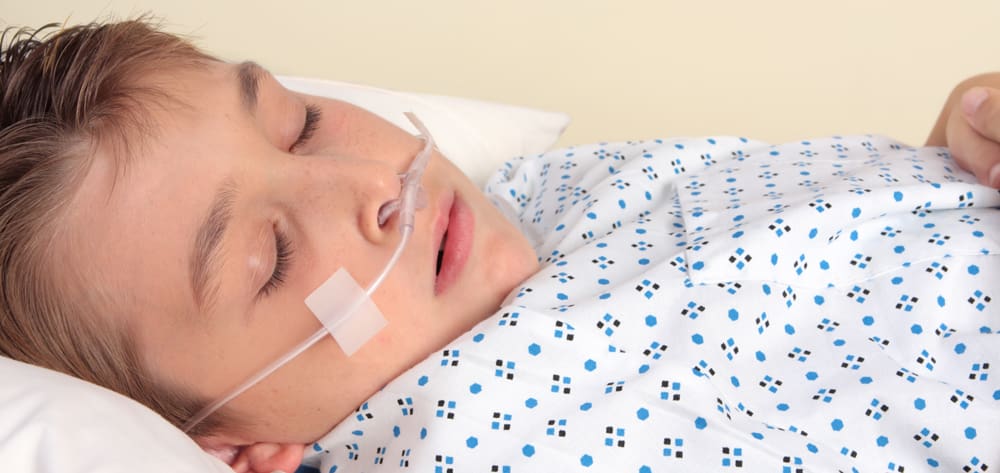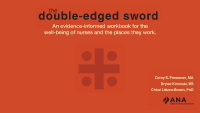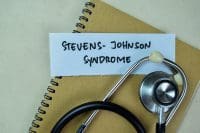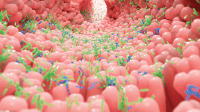Pulmonary arterial hypertension (PAH) is a disease primarily of the small distal pulmonary arteries that narrow and constrict, leading to increased pulmonary vascular resistance. Over time, the right ventricle may thicken and grow weak, causing right-sided heart failure.
Over the past decade, PAH treatment options have improved, extending patients’ lives and improving their quality of life. However, when supportive pharmacologic therapies can no longer maintain adequate heart function, transplantation must be considered. This article discusses PAH pathophysiology, clinical presentation and diagnosis, drug therapies, and other interventions.
Defining PAH
Normally, mean pulmonary artery pressure (mPAP) is 11 to 20 mm Hg. A patient may be diagnosed with PAH if mPAP exceeds 25 mm Hg at rest or 30 mm Hg with exercise. In severe cases, it may rise to systemic (aortic) or suprasystemic levels.
Ordinarily, the right ventricle works against a consistently low PAP that decreases to near-adult levels by ages 6 to 8 weeks. In PAH, it must work harder to maintain cardiac output and thus becomes hypertrophied. This, in turn, causes dilation and poor functioning, which ultimately lead to right-sided heart failure.
PAH may occur with or without elevated pulmonary vascular resistance (PVR). While the terms pulmonary hypertension (PH) and pulmonary vascular disease are often used interchangeably, they’re not the same thing.
- PH simply refers to elevated PAP, which may or may not imply abnormal pulmonary vascular tone.
- Pulmonary vascular disease usually is defined as an abnormal anatomic narrowing of the pulmonary vasculature (from remodeling or thickening of the vascular wall or inherent structural abnormalities).
Simply put, PH may occur with or without elevated PVR, whereas pulmonary vascular disease by definition implies elevated PVR. In the context of this article, PAH represents the disease process that results from elevated PAP, or pulmonary vascular disease.
Pathophysiology
Decreased production of nitric oxide (NO) and prostacyclin and overexpression of endothelin-1 are the major factors associated with pulmonary artery vasoconstriction in PAH. NO and prostacyclin are endogenous pulmonary vasodilators; endothelin-1 mediates pulmonary vasoconstriction. These three factors cause abnormal vascular tone, pulmonary vascular wall remodeling, and prothrombotic tendencies.
In all PAH forms, vascular remodeling of distal pulmonary arteries results from smooth-muscle cell proliferation. In severe PAH, a layer of myofibroblasts and extracellular matrix also develops between the endothelium and internal elastic lamina, further thickening and narrowing pulmonary arterial walls. In some cases, proliferation of disorganized endothelial cells creates lesions. What causes these lesions isn’t fully understood but may include genetic predisposition, hypoxia, shear stress, inflammation, or such environmental triggers as drugs or toxins.
Inflammatory responses also may be involved in PAH pathophysiology. In some patients with PAH associated with systemic lupus erythematosus, immunosuppressive therapy has improved hemodynamics. Procoagulant activity and fibrinolytic function in pulmonary endothelial cells also may be dysfunctional in PAH, causing thrombogenesis. Shear stress or another insult to the pulmonary vascular wall may trigger thrombogenesis as well.
Causes of PAH
Various conditions have been linked to PAH, although in some cases the cause isn’t known.
Besides idiopathic PAH and familial PAH, many of the diseases associated with PH occur with equal frequency in the adult and pediatric populations. Diseases and disorders commonly associated with PAH in children include congenital heart defects associated with systemic-to-pulmonary shunts and certain pulmonary diseases.
Congenital heart defects
PAH associated with congenital heart defects (CHD-PAH) accounts for a large percentage of children with PAH. If the defect is repaired by age 2, PAH rarely develops. If left unrepaired, increased blood flow may lead to shear stress and may mediate structural changes that increase PVR. Over time, increased blood flow may cause the vascular walls to thicken, resulting in pulmonary vascular disease. CHD-PAH is the most common cause of severe illness and premature death in patients with congenital heart defects.
Assessment and diagnosis
Children with PAH commonly present with initial complaints of decreased exercise tolerance, dyspnea with exertion, increased fatigue, or syncope. Because these symptoms are vague, the disease often goes undiagnosed or is misdiagnosed as another condition, such as asthma.
A history of one or more syncopal episodes (PH crises) is the most ominous finding for severe PAH. A PH crisis occurs when PVR increases rapidly to the point where PAP exceeds systemic pressure. When this happens, pulmonary blood flow decreases, causing reductions in pulmonary venous return and cardiac output. In many cases, PH crises are the defining events that lead clinicians to conduct a more aggressive evaluation.
Physical examination may reveal a prominent pulmonic component of the second heart sound, a systolic regurgitant murmur secondary to tricuspid regurgitation, or both. When assessing a child in heart failure caused by severe PAH, you may note jugular venous distention, hepatomegaly, or peripheral edema.
Evaluation and work-up
Expect the patient to undergo an extensive battery of tests, including ECG, chest X-ray, and pulmonary function tests. Additional studies include extensive serum laboratory tests (such as electrolyte and thyroid panels), liver function tests, extensive coagulopathic studies, levels of lipoprotein A and brain natriuretic peptide (a marker for heart failure), rheumatologic panel, and tests for acquired diseases linked to PAH (such as HIV infection and hepatitis A, B, and C). Because obstructive sleep apnea may be associated with PAH, a sleep study is recommended for patients with a history of snoring, sleep apnea, obesity, or chronic fatigue.
Cardiac catheterization is considered the gold standard for diagnosis and risk stratification. Angiography can help determine the severity of pulmonary vascular disease. During this study, an acute vasodilator challenge is done—usually with NO (with or without 100% oxygen) but in some cases with I.V. prostacyclin or adenosine. In the past, an mPAP decrease of at least 20% with unchanged or increased cardiac output was deemed a positive vasodilator response. But more recent definitions of vasoreactivity include an mPAP reduction of more than 10% and an mPAP decrease to below 40 mm Hg with normal cardiac output, as this predicts those patients most likely to respond well to therapy.
Once the work-up is complete, the patient’s functional class is determined by assigning the New York Heart Association (NYHA) classification. Appropriate treatment is based on both the patient’s NYHA functional class and diagnostic data.
Management
Ideally, an underlying defect or disease associated with PAH should be addressed before PAH therapy begins. For example, a congenital heart defect should be repaired surgically, when possible. Patients with rheumatologic diseases, such as juvenile rheumatoid arthritis, may have clinical signs of PAH when their primary disease is exacerbated. When possible, rheumatologic therapies are used to stabilize the child before PAH drug therapy begins or a change in PAH therapy is considered. However, drug therapy may start sooner if the rheumatologic process isn’t likely to stabilize or reverse for some time and the child needs increased support.
Drug therapy
In the last 10 years, pharmacologic options have grown, extending the lives of patients with PAH and prolonging their time to transplant. Although some safety and short-term efficacy studies for PAH therapies have been conducted in children, much of the data derive from adult studies.
Calcium channel blockers
One of the first therapies used for idiopathic PAH, calcium channel blockers decrease PVR by dilating pulmonary arteries. These oral agents may be considered for patients who respond positively to a vasodilator challenge during cardiac catheterization.
Endothelin-receptor antagonists
Endothelin-receptor antagonists (ERAs) block endothelin-1 from binding to the receptor, preventing pulmonary vasoconstriction. Two types of endothelin receptors exist—type A (ETA) and type B (ETB). The ETA receptor causes vasoconstriction when activated, whereas the ETB receptor mediates both vasoconstriction and vasodilation. Until June 2007, bosentan was the only ERA approved for PAH treatment. This drug blocks both ETA and ETB receptors; eliminated by hepatic metabolism, it can cause temporary liver enzyme elevations and requires frequent monitoring. The recently approved ambrisentan selectively blocks ETA receptors and is associated with decreased incidence and severity of liver enzyme abnormalities.
Phosphodiesterase-5 inhibitors
Phosphodiesterase-5 (PDE-5) inhibitors include sildenafil, a potent pulmonary selective vasodilator originally used to treat erectile dysfunction (marketed as Viagra). Like other PDE-5 inhibitors, it blocks the breakdown of cyclic guanylate monophosphate, prolonging the effects of NO. A large double-blind randomized placebo study is currently in progress to determine its safety and efficacy in pediatric patients.
Prostanoids
Prostanoids provide exogenous prostacyclin analogues to replace endogenous prostacyclin deficiency in PAH. Most clinicians reserve these drugs for patients with moderately severe to severe pulmonary hypertension.
Epoprostenol, the first drug approved for PAH, has a half-life of only about 6 minutes and must be given I.V. on a continuous basis. It’s also unstable at room temperature for more than 8 hours. The patient needs a permanent central-line catheter to ensure its delivery and must carry a specially designed medication pump with ice packs that must be replaced at least every 4 to 8 hours. Family members require extensive training in mixing the drug, managing the medication pump, and changing central-line dressings at home.
Treprostinil is given subcutaneously or I.V. on a continuous basis. It has a much longer half-life (approximately 4 hours) than epoprostenol and is stable at room temperature for 48 hours. Although subcutaneous delivery eliminates the risks associated with a permanent central line, more than 85% of patients receiving this drug experience site pain and need pain management interventions ranging from local analgesic gel to narcotics. In pediatric patients, the drug usually is given I.V. rather than subcutaneously. Because treprostinil is safer and more convenient than epoprostenol, some patients receiving epoprostenol have been switched to treprostinil.
Epoprostenol or treprostinil administration by a central line poses the risk of infection or bacteremia. A 2007 retrospective study found higher bacteremia rates for adults and children on treprostinil than those on epoprostenol. Such factors as a slower pump rate with treprostinil, preparation and storage differences, and facility-specific differences in catheter care may account for the discrepancy.
Iloprost, delivered by metered inhaler, is the newest addition to PAH therapeutic options. However, it must be given six to nine times daily, so compliance may be difficult—especially for children attending school. Nonetheless, iloprost is a useful option for patients with severe PAH caused by an unrepaired ventricular septal defect, as central line placement can increase the risk of thromboembolic stroke.
Other prostanoid therapies currently under study include oral and inhaled treprostinil.
Nitric oxide therapy
Inhaled NO, a potent and highly selective pulmonary vasodilator, replaces lack of endogenous NO production associated with PAH. It’s given routinely in intensive-care settings for acute PAH exacerbation or perioperative PAH after cardiac surgery. In infants, the drug reduces the severity of PH crises. Safety and efficacy of chronic inhaled NO haven’t been studied, although a few patients have been managed on outpatient therapy.
Oxygen therapy
Supplemental oxygen helps maintain adequate oxygen saturation through vasodilation, which helps prevent PAH from worsening. It may be used periodically for patients who experience marked desaturation with physical activity, those having episodes of severe upper respiratory infections, patients with obstructive sleep apnea, or those traveling by airplane (especially for an extended period) or who travel or live at high altitudes (above 6,000 ft). Patients who have severe PAH with chronic oxygen desaturation need continuous supplemental oxygen even at rest.
Anticoagulant therapy
Warfarin commonly is prescribed at a dosage that obtains an international normalized ratio of 1.5 to 2.5. Although no formal studies have examined warfarin efficacy in PAH patients, uncontrolled studies found longer survival in adults receiving warfarin compared to those not receiving anticoagulants. For younger and highly active children with mild to moderate disease severity, risks and benefits must be weighed to ensure optimal but safe anticoagulant management.
Other drug therapies
Diuretics, such as furosemide, help decrease preload and reduce the work of the right side of the heart; they may be used in patients with signs and symptoms of right-sided heart failure. Digoxin also may be used in patients with heart failure, although no formal studies have been done in children.
Challenges in therapeutic management
Ironically, the increased number of therapeutic options for PAH presents a challenge for clinicians. Most pediatric patients in NYHA functional classes I and II and with mild to moderate PAH can be treated fairly easily with oral drugs. At the other extreme, patients with severe PAH (systemic or suprasystemic pressures) and in NYHA class IV are almost uniformly started on I.V. or subcutaneous prostanoid therapy (unless contraindications exist). However, a child with moderate to moderately severe PAH who’s in NYHA class III poses a predicament for clinicians, who must decide how and when more aggressive I.V. therapy should be started.
Recent studies have compared the efficacy of monotherapy and combination therapy. Further pediatric studies are needed to provide better direction. With limited scientific basis, some clinicians have combined oral and I.V. therapy, depending on disease severity.
Organ transplantation
When the most aggressive PAH treatment options fail, double lung or heart-lung transplantation is the only treatment alternative. Unfortunately, complications such as organ rejection and bronchiolitis obliterans are hard to manage and have a high mortality rate in both adult and pediatric recipients. The average survival rate 5 years after transplantation is 50%.
Other management considerations
Although large PH treatment centers for pediatric patients are limited, patients should be referred to these centers whenever possible—if only for initial evaluation. Initiating appropriate and aggressive therapy early may help slow or prevent further disease progression. The expertise and experience of clinicians at these centers, in addition to extensive support staff, are essential aspects of care that may influence the prognosis of some patients.
Anesthesia considerations
Pediatric patients with PAH should be evaluated and provided with sedation or anesthesia only under the care of anesthesiologists trained in cardiac and cardiopulmonary diseases. Those with suprasystemic PAH are at increased risk for major perioperative complications, including PH crisis and cardiac arrest.
Nursing care for PAH patients
Nurses can play a valuable role by providing continuity of care, close monitoring, and extensive education for patients and their families.
Physical activity
Many children with PAH can lead relatively normal daily lives. Encourage them to get regular aerobic exercise, self-limit their activity, and rest as they feel necessary. They should avoid weight-bearing exercises, which can increase the risk of a PH crisis.
Birth control
For girls beginning menses, discuss birth control options with the patient and family. PAH patients who become pregnant are significantly at risk for death. Also, warfarin, bosentan, and ambrisentan are teratogens that could harm the fetus. Some experts recommend prescribing progesterone-only contraceptives because those containing estrogen may increase the thrombus risk.
Vaccinations
Inform parents that their child should receive all childhood vaccinations. Also recommend pneumococcal vaccinations and annual influenza vaccinations.
Family stressors
Like all progressive diseases, PAH can take a devastating emotional toll on all family members. The daily responsibilities associated with I.V. drug therapy may cause constant anxiety and stress. PAH therapies and follow-up tests can be extremely costly, adding financial concerns. Refer the family to appropriate resources to help them cope with stressors.
Therapeutic gains, but still no cure
In the last decade, medical science has made therapeutic inroads against PAH, developing drugs that target major pathways of the disease. However, understanding of the disease process and its management is still limited. To improve survival for children with PAH, further scientific and clinical studies are needed—with the ultimate goal of finding a cure.
Selected references
Centers for Disease Control and Prevention. Bloodstream infections among patients treated with intravenous epoprostenol or intravenous treprostinil for pulmonary arterial hypertension—seven sites, United States, 2003-2006. MMWR Weekly. 2007;56(08):170-172.
Chang, A, Chan K, Lonigro R, et al. Surgical patient outcomes after the increased use of bilateral lung transplantation. J Thorac Cardiovasc Surg. 2007;133(2):532-540.
Humbert M, Morrell N, Archer S, et al. Cellular and molecular pathobiology of pulmonary arterial hypertension. J Am Coll Cardiol. 2004;43(12 suppl S):13S-24S.
Humbert M, Sitbon O, Simonneau G. Treatment of pulmonary arterial hypertension. N Engl J Med. 2004;351:1425-1436.
Landzberg M. Congenital heart disease associated pulmonary arterial hypertension. Clin Chest Med. 2007;28:243-253.
Magee J, Bucuvalas J, Farmer D, Harmon W, Hulbert-Shearon T, Mendeloff E. Pediatric transplantation. Am J Transplant. 2004;4(suppl 9):54-71.
Masaki T. Possible role of endothelin in endothelial regulation of vascular tone. Annu Rev Pharmacol Toxicol. 1995;35:235-255.
McLaughlin V, Presberg K, Doyle R, et al. Prognosis of pulmonary arterial hypertension: ACCP evidence-based clinical practice guidelines. Chest. 2004;126:78-92.
Rich S, Kaufmann E, Levy P. The effect of high doses of calcium-channel blockers on survival in primary pulmonary hypertension. N Engl J Med. 1992;327(2):76-81.
For a complete list of selected references and to learn more about PAH classification, diagnostic tests, and associated conditions, visit myamericannurse.com.
Michelle T. Ogawa, MSN, RN, CPNP, is a Pediatric Acute Care Nurse Practitioner specializing in pediatric pulmonary arterial hypertension at Lucile Packard Children’s Hospital in association with the Vera Moulton Wall Center for Pulmonary Vascular Disease at Stanford University Hospital in Palo Alto, California. She serves on an advisory board for United Therapeutics.


















